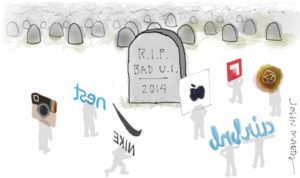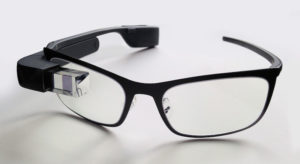Being at South by Southwest (SXSW) is kind of like being on the Internet. When you’re not wading through vast amounts of people, information and events, you’re likely engaging in something useful or pretty cool.
The film, interactive and music festival/conference draws tens of thousands of people to Austin, TX each year based on its reputation as the “breeding ground” of the latest and greatest in creative technology.
The venue that unveiled Twitter in 2007 has gradually transitioned from geek culture to the mainstream, attracting hundreds of large brands and arguably demonstrating more about marketing than innovative technology this year.
Greenpeace usually sends a few folks to SXSW Interactive (SXSWi) to learn about the latest trends. We caught up with two members of the Mobilisation Lab (MobLab) team who presented at sessions this year.
How Civil Disobedience Translates Online
MobLab’s Ben Simon moderated a panel about the future of direct activism in the digital age as part of the global impact and policy themed sessions at SXSWi.
The mobilisation campaigner and senior strategist led a discussion exploring the ways in which online actions are treated differently from their offline, analogue counterparts.
“A sit-in is viewed as free speech, and the fact that you’re disrupting someone’s ability to get lunch that day is viewed as the cost of democracy,” Ben explains.
But the case is different for online disruptions.
“When you take part in a distributed denial of service attack online, or in some sort of website defacement, that’s often prosecuted under a consumer fraud framework that leaves a lot of leeway for prosecutorial discretion — and online actions are popular ones to go after pretty hard,” he says.
What is a distributed denial of service attack? This article, by panelist Molly Sauter, a doctoral student at McGill University, provides a quick primer on current online civil disobedience tactics.
The panel discussion with Ben, Molly, David Segal of Demand Progress and Shahid Buttar of the Bill of Rights Defense Committee, touched on the open web movement, which opposes online privatization or exclusivity.
“Conduct and protest is what’s available to disadvantaged groups and speech is what’s available to advantaged groups,” Ben says, citing Molly’s comments during the panel discussion. “It creates further imbalance of power when you’re able to use legal frameworks to stop people from speaking out in the ways available to them.
“In many ways that’s one of the things the Internet does — it democratizes that and theoretically makes that conduct available to more people, but it’s treated in this massively different way,” he says.
Bringing Reliable Internet to Disconnected Regions
The creators of Ushahidi showcased their latest work at SXSW: BRCK, a ruggedly built hub, connector and backup power source for the Internet. Designed and built in Nairobi, the team explained how the device was created to provide connections in places where it is typically hard to get access. It fills in a gap for conditions that don’t meet the necessary assumptions for equipment that’s typically used all over the world, like ubiquitous electricity connections, years-worth of fiber infrastructure and a desktop computer office environment.
The cloud-managed modem/router was designed to work through unstable power supplies, presenting many possibilities for social good, including education in rural, disconnected locations and maintaining connection during street protests, citizen uprisings and other forms of activism. It’s a tool to keep an eye out for. You can watch Ushahidi co-founder Juliana Rotich’s TED talk about BRCK here.
Wearable Tech Was All The Rage
“SXSW had more people walking around feeling comfortable in public wearing Google Glass than I’ve ever seen in my life,” says MobLab global director Michael Silberman.
Wearable technology like headbands and watches was popular at the festival. While uses in health and fitness were the most common, possibilities for wearable tech for social campaigns present themselves as well.
“If activists are able to create better connections with people who are not physically at a location — beyond live-streaming with a cell phone, which has had its limitations due to bandwidth — if we have better technologies that allow people to post more quickly about what’s happening in real-time non-violent direct action, street protests, and citizen uprisings, that can certainly scale impact of some of these popular movements,” Michael says.
“And that’s just accelerating what we’re already doing,” he adds. “There’s more that we haven’t figured out yet.”
Wearable tech also presents questions around data and privacy, Michael says. Who owns all that information collected about your heart rate? It forces us to think differently about our relationship to technology, privacy and data tracking.
Many of us have become accustomed to social expectations around cell phones. When someone holds up their phone in public, we tend to understand that they’re likely taking a photo. But if everyone is wearing Google Glass, it’s harder to tell that they might be making a command to snap a photo and post it at any given moment, he says.
Changing the Changemakers
Michael spoke alongside representatives from UNICEF, Oxfam and the Sierra Club about how big organizations can keep up with Internet-era advancements and still thrive.
At the session, Changing the Changemakers — Nonprofit Innovation, a room packed with people from organizations that largely existed before the Internet took notes and shared tweets on effective transition strategies.
The importance of managing internal politics arose as an important theme for those working with digital tools and toward changemaking more generally.
“If you’re being an intrapreneur, you can’t just deliver the numbers. There’s this inside job of building and maintaining political capital. It’s critical to ultimately be able to achieve whatever change you’re trying to make happen,” Michael says.
“Whenever we do sessions like this, it can be very cathartic for people because it turns out that there aren’t a lot of spaces for people to talk about the challenges of the internal workings of their workplace. I’m always surprised and humbled to see how many people are struggling with similar challenges wherever they work, he says.”
Meeting Your Audience’s Potential and Thinking Like the Internet
With hundreds of brands and over 70,000 pass holders this year, SXSW created a competitive environment to get noticed in. Aside from traditional push marketing tactics like cheap stunts or offering free tacos and beer, some brands were more successful than others in providing useful and meaningful engagement with SXSW attendees.
“How does a brand that’s trying to engage an influential audience think like the Internet a bit more? That’s what the opportunity is,” Michael says, reflecting on more meaningful tactics like personalization.
Tripit, a travel organizer mobile app, invited users to a conversation over breakfast around how to improve the digital tool.
The gathering humanized the brand, giving influential users the opportunity to meet people behind the product, and deepened the relationship by acknowledging input from users for future development.
“I had a very positive experience, and it was at very little cost to them,” Michael says, comparing it to some of the more costly campaigns run by other brands.
Samsung hosted battery replacement stations throughout the conference on March 16. If an owner of participating Samsung phones tweeted that they were running low on juice, a Samsung rep would cycle over to their location and replace their battery with a new one.
“It was a way to create a remarkable experience and an exclusive experience for Samsung customers,” Michael says, “and to add value to their lives to say we acknowledge you, we thank you, you’re special to us, and we’re going to take care of you.
“You can be sure that the people who were customers noticed, as well as all the people who don’t have Samsung phones. I thought that was a smart use of marketing budget,” he says.
On the flipside, while Ben was impressed from a brand relationship perspective, he also acknowledged an argument could be made that the campaign insinuates that Samsung batteries don’t last very long. Still, it provided users with something of value, unlike a lot of the unnecessary swag that many other brands gave out to thousands of participants.
“As we see marketing dollars pouring into an event like this, because it’s gone from fringe to mainstream, I think we’ll see the brands and organizations that are able to engage people in a more nuanced way win out over those who try to use more traditional broadcast or push marketing approaches on their audiences,” Michael says.
Experimental Storytelling Without Direct ROI
One of the more innovative initiatives Michael came across was Dark Rye, an online magazine launched by Whole Foods Market with almost no Whole Foods branding. The digital publication explores food, health, sustainability, design, tech and social enterprise, without a direct link to getting people to buy Whole Foods products.
“There’s no ROI for it in terms of whether it’s driving more shoppers into stores, but it does tell the larger story of the brand and its values,” Michael says.
“What’s interesting to me is that we’re seeing successful brands in the social and corporate sector telling larger stories than the immediately obvious ones. This isn’t just another front door into Whole Foods, I think this is their way of engaging and attracting audiences who are probably important and influential, but in ways that stand for a broader mission.”
Dark Rye provides a rich media environment for online storytelling and a means for the Whole Foods brand to express and promote the values it stands for. This might be an important differentiator for the brand.
“If Greenpeace’s overall brand is supporting people taking a stand and taking action peacefully for a better world, what would that look like beyond specific campaign pushes?” he asks.
It raises important questions around how organizations can determine what projects are worth investing in and what stories are worth telling, he says.
Stay Connected:
Related Posts:
Do you have an innovation in mobilisation and people-powered campaigns? Share it with Mob Lab by contacting moblab@greenpeace.org.
Top photo: Skeletonics demo mechanical suits, created with the hope of enhancing human capacities through robotics, at SXSWi. Photo Credit: @TechNWSRM




